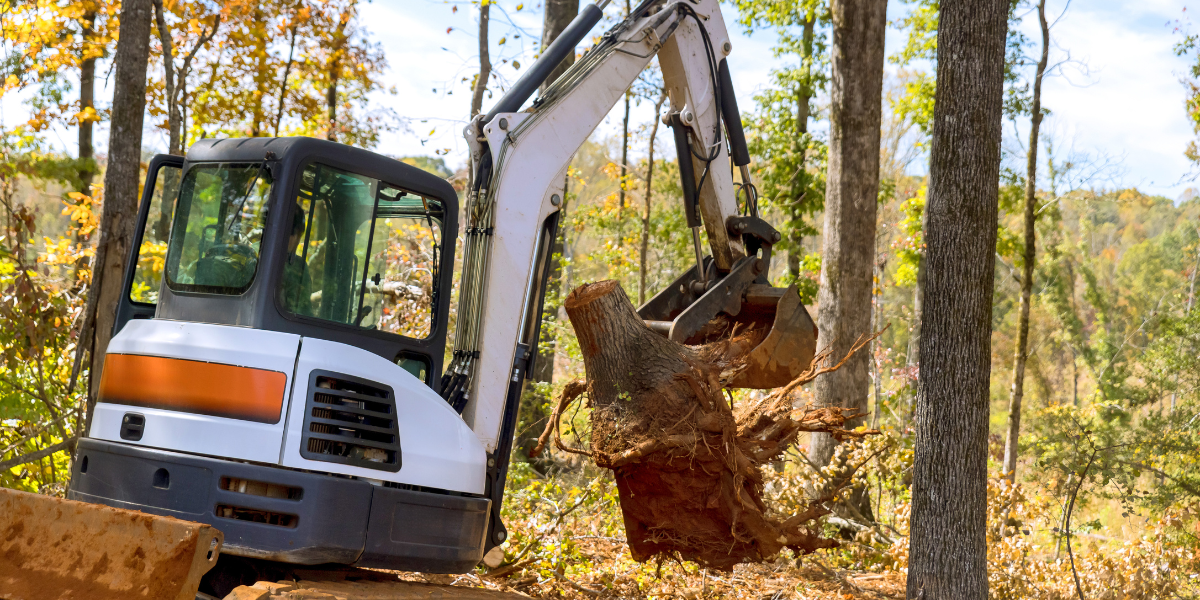How Much Soil Is Excavated While Construction?

One of the first questions to ask in any construction project is: how much soil is excavated while construction is in full swing? From digging foundations to installing underground utilities or using a cutterhead for precise cuts, understanding the volume of soil to remove is essential.
The answer depends on a range of factors—soil type, depth, and project size all play a big role. Typically measured in cubic yards or cubic feet, the volume of soil excavated vary widely, but getting the numbers right is key to a smooth, cost-efficient project.
In this blog, we’ll explore the must-know factors, show you how to calculate volumes accurately, and reveal the best tools for the job to ensure your excavation is spot on from start to finish.
Key Takeaways
- Accurate excavation volume calculations are critical to keeping construction projects on time and within budget.
- Soil type, depth, and excavation area size all play major roles in determining how much soil to remove.
- The right tools, like powerful excavators and precision equipment, ensure efficiency and reliability in any excavation job.
Factors That Influence How Much Soil is Excavated

Accurately determining how much soil will be excavated is essential for any excavation job. To calculate the total volume of soil removed, you must consider several factors. Let’s dive into the most important considerations to ensure your next project runs efficiently.
1. Soil type
Soil type heavily influences how difficult the excavation will be and how much dirt is removed.
Clay is dense and tough, requiring more effort and specialized equipment, while sand is easier to dig but may need extra support to prevent collapsing. Rocks and roots complicate things further, slowing progress and adding to the volume of excavated material.
The swell factor also comes into play. Soil expands when excavated and can take up more space than when compacted. For instance, large volumes of soil could swell by 20-30%. This must be factored in when calculating the cubic yards of material that needs to be hauled away.
2. Excavation area
The size of the excavation area determines how much soil will be removed. Larger areas lead to large volumes of dirt being dug up, especially on projects like basements or large foundations.
Accurately measuring the length, width, and depth of the area is vital for making accurate calculations of how much soil will be displaced. For straightforward projects, the volume can be quickly calculated in cubic feet or cubic yards using these dimensions.
3. Depth of dig
Deep excavations, such as for tall buildings or deep basements, result in significantly more soil being dug up than shallow jobs like laying pipes or installing small foundations.
The deeper you dig, the more cubic yards of soil you’re moving, and the more likely you are to hit different soil layers, such as clay or rock, which require different equipment and strategies to manage effectively.
4. Slope of the excavation
Safety regulations often require the sides of an excavation to be sloped, particularly in trenching projects. Sloping increases the amount of surface area being dug up, leading to a higher total volume of soil that needs to be excavated.
Calculating this properly is key and involves using the right formulas to account for the extra volume created by sloped sides.
5. Rocks and roots
Unexpected rocks or roots can create additional challenges. These obstacles slow down the process and increase the amount of material removed, as you may need to dig around or remove them altogether.
Heavy equipment might be required to break through tougher ground, which affects both the timeline and bucket capacity of the excavator used for the job.
How to Calculate Excavation Volume

Accurate calculations are the foundation of a well-planned excavation job. Here's how to calculate the volume of dirt removed effectively using the right tools and techniques.
1. Measure regular and irregular shapes correctly
For projects involving regular shapes like rectangular trenches, volume calculations are simple. Use the formula:
Volume=Length×Width×Depth
For example, if you’re digging a trench that is 20 feet long, 5 feet wide, and 3 feet deep, the calculation would look like this:
20×5×3=300 cubic feet
Since most excavation projects are measured in cubic yards, you’ll need to convert cubic feet to cubic yards. To do this, divide by 27:
This gives you an accurate rough estimate of the total volume of soil that will be dug out and moved.
300/27 = 11.1 cubic yards
For areas with irregular shapes or uneven terrain, more advanced methods like the cross-section or grid method are needed. These techniques account for variations in slope, depth, and width across the excavation site.
- Cross-section method: Break the site into a series of sections. Measure the depth and width at different points and calculate the average volume of soil to be removed for each section.
- Grid method: Divide the excavation area into smaller squares, measure the elevations at each corner of the grid, and use these to estimate the total volume of dirt.
2. Consider the bucket capacity
For a more practical approach, you can factor in the bucket capacity of your excavator.
Understanding how much material your excavator can move per scoop helps ensure that your work progresses efficiently.
For example, if your excavator's bucket capacity is 1 cubic yard, and you know the total volume of soil to be dug is 15 cubic yards, you can expect the job to require around 15 scoops to complete.
3. Account for swell and shrinkage
Soil behaves differently once it’s been excavated. The swell factor causes the dirt to expand, increasing the volume you’ll need to move.
On average, this can add 20-30% more quantity to your load. Similarly, once the soil is replaced and compacted, it will shrink, so plan accordingly when estimating fill amounts.
4. Get the right tools for accurate calculations
Using the right equipment and tools ensures that your measurements are precise. Modern software solutions, excavating calculators, and GPS-guided systems can help you produce more accurate calculations and reduce the margin for error on large-scale construction projects.
The Right Equipment for Efficient Excavation
Having the right excavation equipment can make or break your project. The tools you choose—from excavators to heavy equipment—determine how quickly and efficiently dirt is removed. Here’s how to make sure you’re using the best gear for the job.
1. Choosing the right excavator
The type and size of your excavator directly affect your speed and accuracy. With various bucket capacities, an excavator can remove between 40 and 60 cubic yards of soil per hour, depending on ground conditions.
For larger areas, opt for bigger buckets to maximize efficiency, while smaller excavators are better suited for tighter spaces requiring precision.
2. Heavy equipment for big jobs
For large projects, heavy equipment like bulldozers or backhoes can significantly speed up the excavation process. Bulldozers move large volumes of earth quickly. This makes them ideal for clearing foundations. Backhoes, on the other hand, offer versatility for both digging and filling.
e. Match equipment to conditions
Selecting the right equipment for your site conditions is crucial. Soft soil may require larger machinery, while rocky ground or steep slopes may need more specialized tools for precision.
RockZone: The Power You Need for Efficient Excavation
Tough excavation projects with rocky or hard ground can quickly slow down progress and drive up costs. You need powerful tools that cut through soil and rock with precision and speed. That’s where RockZone Americas steps in.
Our innovative solutions are built for even the most demanding construction sites. From rocky terrains to heavy dirt and hard-to-reach areas, our Rockwheels, Rockcrushers, and Cutter Buckets are engineered to keep your project on track.
With over 50 years of expertise, RockZone’s high-performance attachments, like Drum Cutters and Soil Mixers, deliver fast, reliable results on any job. Whether you’re renting or purchasing, we have the equipment to meet your needs and push your project forward.
Ready to tackle the toughest challenges? Contact RockZone Americas today and let us power your next big dig.
Summary
Accurately calculating how much soil needs to be excavated is key to staying on schedule and controlling costs in any construction project.
By factoring in soil type, depth, and slope and using the correct formulas, you can confidently estimate the volume of earth to be removed. Accounting for variables like the swell factor ensures your project is prepared for any challenge during the excavation process.
With precise measurements and the right equipment, your excavator dig will run smoothly, and your workers can maximize efficiency. Proper planning and the right tools make all the difference in delivering a successful project.
Frequently Asked Questions
How do you calculate excavation in construction?
To calculate the volume of soil for an excavation job, you first measure the length, width, and depth of the area to be excavated.
For regular shapes, multiply these measurements to get the volume in cubic feet. Divide by 27 to convert to cubic yards. For irregular shapes, advanced methods like the cross-section or grid method are used to ensure more accurate estimates.
What is the total volume to be excavated?
The total volume to be excavated depends on the size of the excavation area, soil type, and project needs. To determine this, multiply the length, width, and depth of the excavation site.
Adjust for variables like the slope or swell factor, which may increase the quantity of earth removed during digging.
What is the rate of excavation per cubic meter?
The rate of excavation per cubic meter varies based on factors such as soil conditions, location, and the equipment being used. On average, an excavator can remove between 40 to 60 cubic yards of soil per hour, depending on the size of the excavator and the difficulty of the site.
